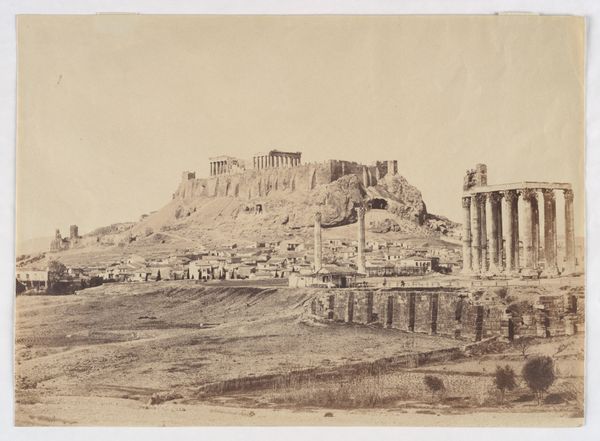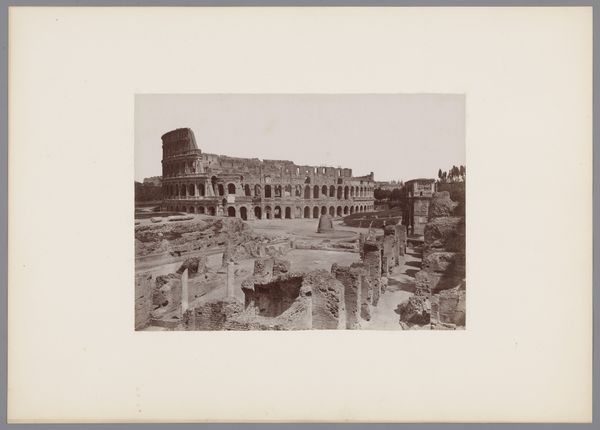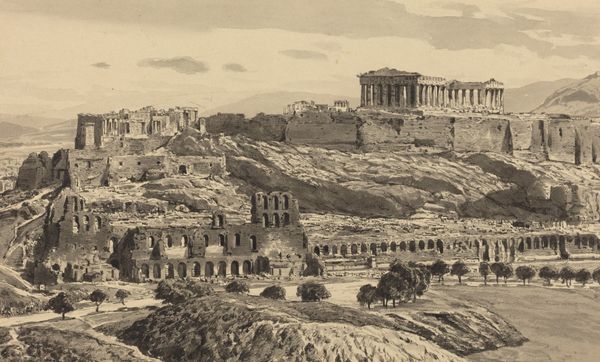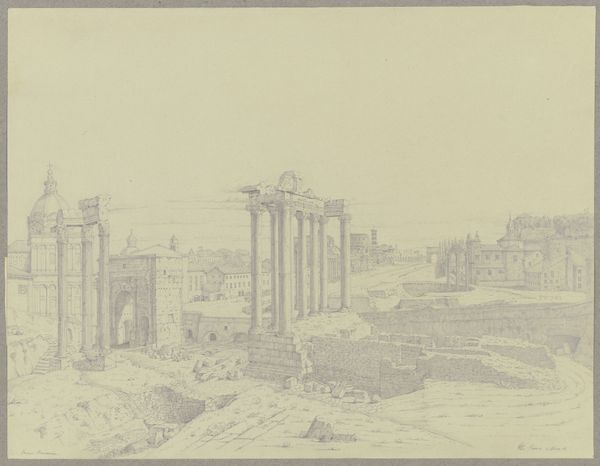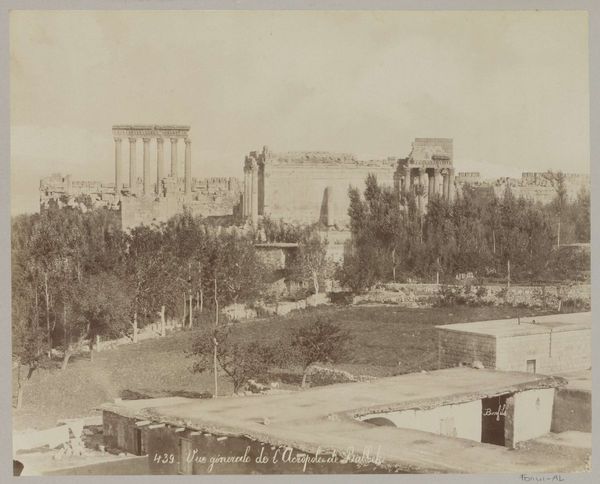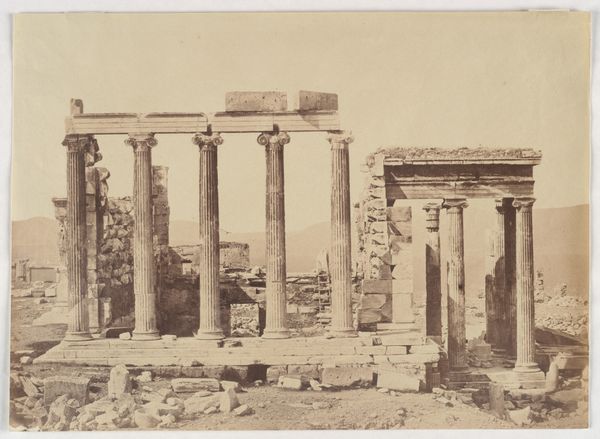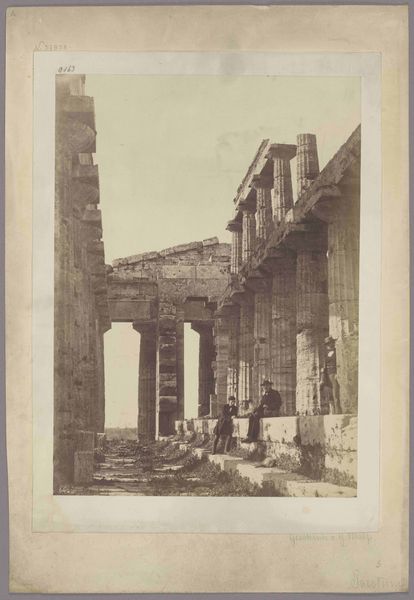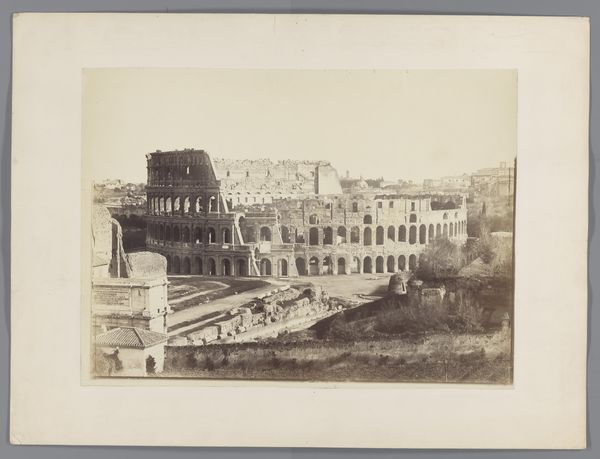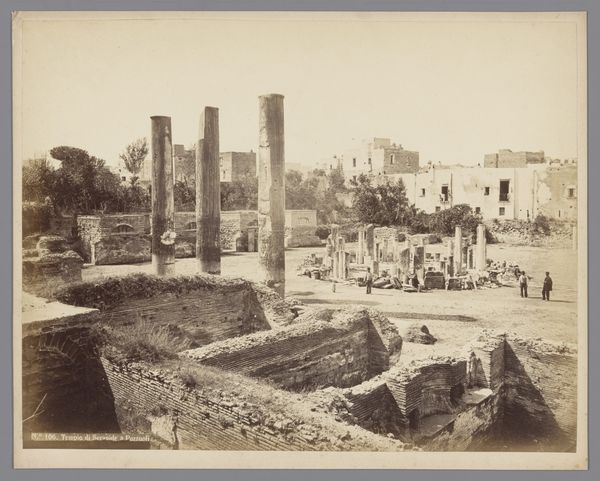![[Acropolis, Athens, Greece] by James Robertson](/_next/image?url=https%3A%2F%2Fd2w8kbdekdi1gv.cloudfront.net%2FeyJidWNrZXQiOiAiYXJ0ZXJhLWltYWdlcy1idWNrZXQiLCAia2V5IjogImFydHdvcmtzLzBmYmY3OWZjLTZiNmMtNDFkYS1iMTFjLWY4NDUxZGM4ZDEwZS8wZmJmNzlmYy02YjZjLTQxZGEtYjExYy1mODQ1MWRjOGQxMGVfZnVsbC5qcGciLCAiZWRpdHMiOiB7InJlc2l6ZSI6IHsid2lkdGgiOiAxOTIwLCAiaGVpZ2h0IjogMTkyMCwgImZpdCI6ICJpbnNpZGUifX19&w=3840&q=75)
photography
#
greek-and-roman-art
#
landscape
#
photography
#
ancient-mediterranean
#
cityscape
Dimensions: Approx. 11 x 15
Copyright: Public Domain
Editor: This photograph, taken by James Robertson between 1850 and 1855, captures the Acropolis in Athens. It's a striking image; the Parthenon is obviously impressive but there's also something ghostly about the ruins, especially considering it’s a photograph. What speaks to you most when you look at this? Curator: Immediately, I’m drawn to the material process of producing this image. Think about the collodion process likely used here—glass plates, meticulously coated and exposed, transported, developed on site. Consider the labour and access that afforded Robertson this viewpoint. He's not just capturing a landmark, but also showing a site embedded in systems of power and commodity. How do the visible repairs and excavations of the Acropolis, as they appear in the photo, become products or resources themselves? Editor: That's interesting, I hadn’t really thought about that. The photo is so focused on the ruins themselves, it didn’t occur to me to think about the process *of* photographing them. Curator: Precisely! Look closer. The way the light falls, the textures of the stone... how does the chemical process interact with the 'real' material of the ruins? How does the consumption of this image differ depending on who is consuming it, and what is it actually communicating or concealing about Athens at that specific moment? It's not just about aesthetic beauty; it’s about the relationship between material culture and how we understand history. Editor: So, beyond just being a historical record, it also documents the labour involved in both maintaining the Acropolis as a monument *and* turning it into an image that could be sold or consumed? Curator: Exactly! The very act of making this photograph participates in a network of cultural and economic forces. We often forget that "ancient" and "art" are constructed categories with a market value, rather than static historical realities. Editor: I never thought about photography like that before; that’s a really valuable way to look at things. I’ll definitely keep that in mind from now on.
Comments
No comments
Be the first to comment and join the conversation on the ultimate creative platform.
